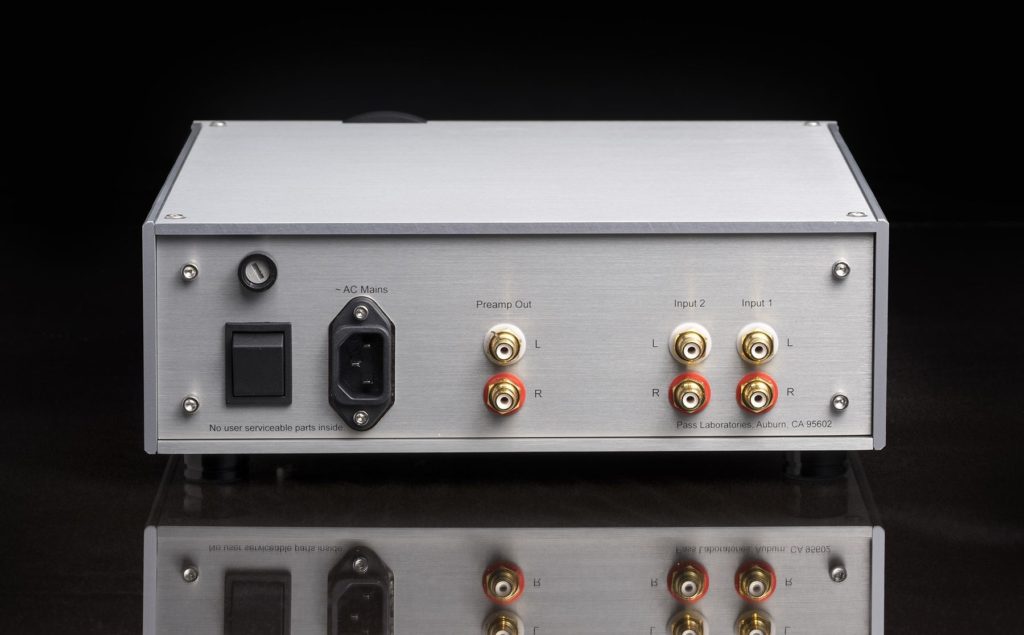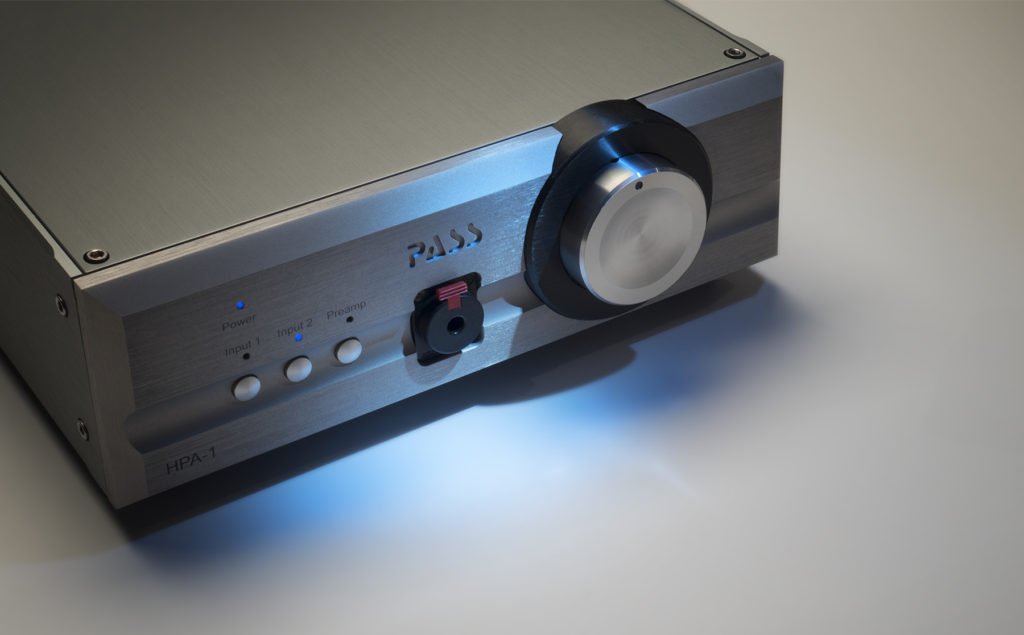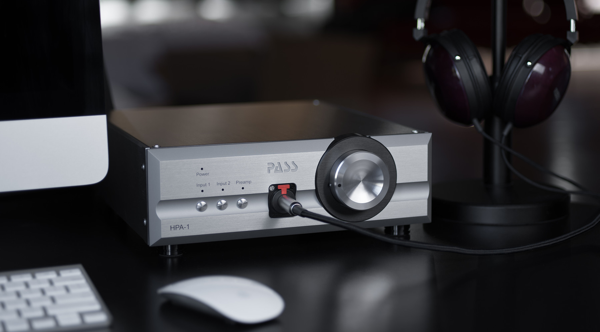Adam LaBarge | Reviewer
Introduction
Pass Labs and Nelson Pass should need no introduction. Nelson Pass has been a seminal figure in the high-end audio world, a vocal proponent of listening tests, simplicity and the DIY audio culture. Pass components can often be found in many rooms at audio shows, and these rooms almost never fail to impress. In fact, I don’t think I’ve ever heard a room with Pass components that I didn’t at least respect, although it has always been a disappointment to me that there was never a Pass Labs headphone amplifier.
After having the privilege of experiencing two different Pass Labs XA series amplifiers paired with a Pass Labs preamplifier in my main system, I very much wanted to enjoy the same sonic quality at my desk. But alas, that didn’t seem like it was in the cards, and I ended my personal search for a headphone amplifier that could do these three things: fit on my desk, drive my Audeze LC-2 headphones, and not cost too much. I ended my search with a Burson HA-160 purchased from Audio Vision in San Francisco, CA. With this, I told my wife I wasn’t going to need to buy another headphone amplifier. This was going to be enough. So, how do I tell my wife I was wrong?
?Readers who enjoy this post can find out more about Pass Labs in Pass Labs XA25 Pure Class A Power Amp and the HPA-1 as the Preamp.
Product Specifications
While integrated all-in-one headphone solutions are quite popular at entry and mid-fi level price points, when it comes to the very high-end, components often focus on specific functionality. The Pass Labs HPA-1 is no exception to this. While this a-la-cart philosophy can add to the cost or take up more room on the desk, one is generally rewarded with better sound and the ability to tinker with the system.
The HPA-1 is a discrete, MOSFET, class A analog headphone amplifier or pre-amplifier, and it is that only. No DAC or digital parts are included. The HPA-1 has two RCA inputs, one RCA preamp out, three manual selection buttons on the front panel, a power switch and port, a 1/4th inch headphone port and a huge volume knob. The HPA-1 does have one feature I personally find a bit odd, a lock for the headphone plug. Maybe these days the kids are hanging their amplifiers upside down, you know, to get every last drop of sound. If so, I suppose I could see a plug slipping out.

The chassis for the HPA-1 is 28×11.5x33cm (WxDxH), and while it is large and it does need to be to disperse that class A heat, the footprint really isn’t much larger than a mini desktop PC. Finding a spot for it on a cluttered desk shouldn’t be too much trouble.
The HPA-1 offers a wide bandwidth, the Frequency Response is 10 – 100,000Hz, which goes well above the FR of most headphones, so this is an obvious tip to the preamplifier side. Output power into 20Ω and 300Ω loads is 3500 and 200mW. THD + noise is < 0.005% (@1V), input impedance is 50 000KΩ and output impedance sits below 2Ω. Gain and power consumption are 8dB and 6W. Pass Labs’ aim was to be able to drive any none electrostatic headphone with ease.
Visually the HPA-1 is, at least to me, stunning. Sitting on the desk it constantly draws my eye to it. The HPA-1 continues in the Pass Labs tradition of a simple and modern industrial design where the user interaction is obvious, but it isn’t boring. The off-center volume knob and the clearly thought out spacing between each interactive point on the front panel show that while simple, real thought went into this placement. It is like an obvious and easy to use the app. In app design, if how to use it has to be explained, then the design has failed.

Paired Components
Any component that is plugged into a system is no longer operating in isolation. And something like an amplifier, or any component closer to the output of a system, is more influenced by the components that precede it. Therefore, I believe it is impossible to review a component in isolation. Rather, a component has to be reviewed in the system as a whole. The components I was able to pair the HPA-1 with would generally be considered in the entry to mid-fi range of hifi while the HPA-1 is definitely in the high-end. This gives me the opportunity to take a different approach. In this review, I’m speaking to someone who might be looking to find a bedrock component to build a high-end system around. And I think an amplifier or the headphones are bedrock components that you should then be able to build around.
I’ve had my Audeze LCD-2 headphones for a couple of years, and I have been lucky enough to have heard them with a variety of amplifiers and ancillary components. I’ve continued to be impressed by just how good these headphones sound when plugged into high-end systems, and so I’ve not seen a need to upgrade to the Audeze LCD-3. For my DAC and source, well, I believe I found reasonable components to pair with my headphones, the Burson HA-160, a PS Audio Digital Link DAC, my computer, and a Mano Campo transport with WyWires cables throughout. This gives me a solid system for about $3,000.
So what happens when I replace the Burson with the Pass Labs HPA-1?
Listening Experience
I think it would be fair to say that the HPA-1 is one of the best headphone amplifiers I have heard. It is absolutely a bedrock component to build a system around. It is powerful but controlled, as in it can stomp out metal at high volume without being fatiguing. It is detailed to the point where it nearly removes all of the mystery from certain recordings. My Bloody Valentine’s Loveless, The Cure’s Wish, and The National’s High Violet are all albums where a veil or haze has always seemed to keep the fine details just out of reach, and the HPA-1 completely stripped that veil away, allowing me to hear and be able to focus on specific instruments and sounds. For better or worse, I could now pinpoint specific sounds to instruments more so than with any previous headphone amplifier I had spent real time with. On these points alone, the HPA-1 is a winner. But to add to this, the sound-staging is wide but within limits, and the clear articulation of small details such as mistakes or fingers fumbling across strings, are clear and the tonal quality seemed spot on. These qualities make it easy for me to recommend this amplifier to anyone interested in breaking into the high-end world without a massive price tag. Yes, $3,500 is a lot, but I know a lot of people out there with several mountain bikes that cost 5 or 6 thousand dollars each. So, if audio is one of your things, I think the price is well within reason.
Over the course of the review, I was able to switch out my DAC with several others, the Oppo Sonica DAC being one, and several entry-level USB to RCA DACs, and I was amazed, over and over again by how good these inexpensive DACs sound when they are given the opportunity to really be heard. And this is important because it means that if you have an entry-level to mid-fi DAC now, amping it up with the HPA-1 will only make you smile. Even toggling between lossy streaming audio and high def lossless, I was blown away by how good lossy audio could really sound, and I was transported out of my office on the high def stuff.
There is one more thing that I do want to bring up. Solid-state amps often get the rap of not being emotionally engaging and too analytical, although they may be more technically correct when compared with tube amplifiers. While the Pass amps are solid-state, they are very musical, which makes them very special. While “musical” can mean many things to many people, to me it means the component’s sound is emotionally engaging. The XA amplifiers I had in my big system were that way, and every 211 amplifier I’ve heard I’ve fallen in love with, so those must also be emotionally engaging. I tend to enjoy tubes and vinyl over digital and solid-state, but Pass Labs’ solid-state amplifier and some really nice DACs have made me invest more in my digital setup. I would speculate, though I could be wrong, that since Nelson Pass himself didn’t have anything to do with the HPA-1, it might not be at the same level “musically” as the Pass Labs amplifiers I’ve spent time with, or since the HPA-1 doubles as a preamplifier, the HPA-1 may offer more of a neutral sound than Pass Labs amplifiers are known for.
Summary
The Pass Labs HPA-1 does not disappoint. It is a reference level high-end headphone amplifier that can offer years of enjoyment, especially for those who like to tweak the sound with aftermarket cables, try out different DACs or software, or even plug it straight into the phono-amp output. Considering Pass Labs amplifiers can come at a very high price point, I think the HPA-1 is competitively priced, and because it is a Pass Labs component, it will retain its value over time if you ever dared yourself to sell it.


It’s to bad that you did not audition the HPA-1 as a preamplifier. When I wrote a review on it I only used it as a preamplifer into XA-60.8 mono blocks and other reference level tube amplifiers. It is the best SS linestage, even besting Pass’s own three box reference, for my tastes. Detailed, but 3D imaging and timbres normally only found in tube based gear. What they learned building the HPA-1 they will be bringing to the next generation of preamplifiers. So, I think your hunch is incorrect that since Nelson did not create this design it would be less musical then his own
Thanks Terry for the comment. While it did not get a complete review as a preamp, I did talk about what a great preamp it was in my review of the XA25 power amp. I agree it is very, very good as a preamp, but I wouldn’t put it quiet in the league with the Pass XS preamp I reviewed for Dagogo.
Jack Roberts
Hi Terry, I wish my bigger system would allow for that. I could see (hear) it being a fantastic pre-amp – maybe even better than headphone amplifier. Maybe I’ll be able to give that a listen to one day.
Terry, how do these impressions of the HPA-1 as a preamp hold up now that you’ve spent more time with the Coda gear since posting this comment (particularly the Coda 07x preamplifier)?